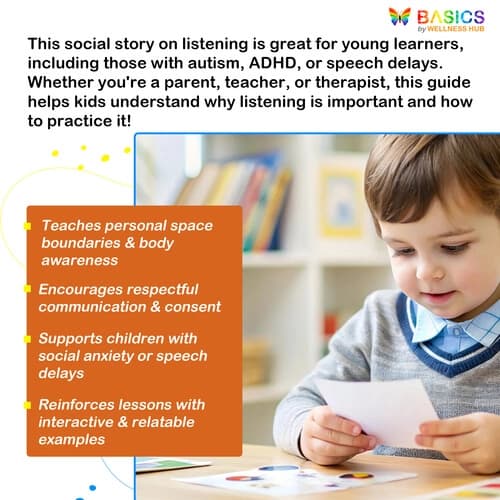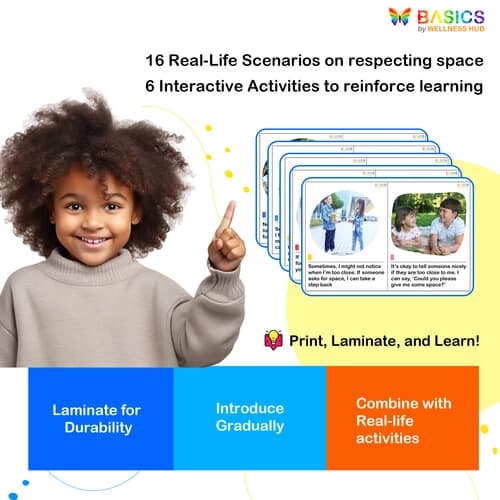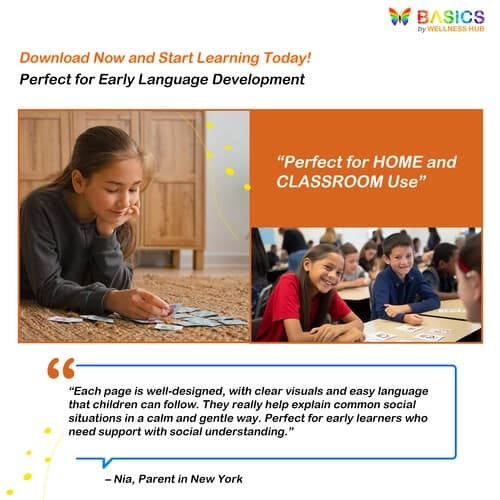

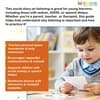

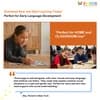
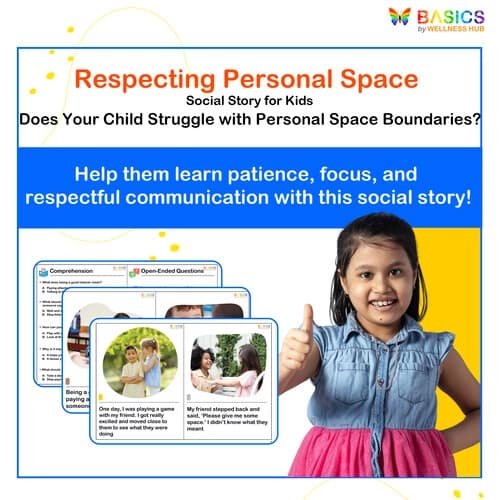
Respecting Personal Space – Social Story for Kids’ Personal Boundaries
₹80
₹160
50% off
0 (0 ratings)
Grade Levels
Pre-K - Grade 3 (Ages 4-9)
Content Overview
Format: Printable PDF, Total Pages: 11, Features: 16 real-life segments, engaging illustrations, interactive activities
Categories
Pages from the Resource
Teach children the importance of respecting personal space with this social story. Through real-life scenarios and step-by-step guidance, kids learn healthy boundaries, turn-taking, and social awareness. Perfect for home, school, and therapy sessions—ideal for children with autism, ADHD, or social-emotional challenges.

Page 1
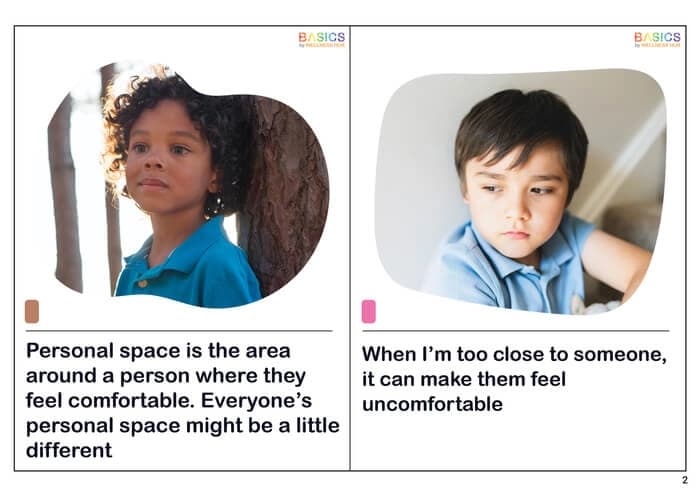
Page 2
What Users Say
0
0 ratings
5
0+
4
0+
3
0+
2
0+
1
0+
5 Stars
Product is Good to use.
1 year ago
Varsha Parent
Similar Products
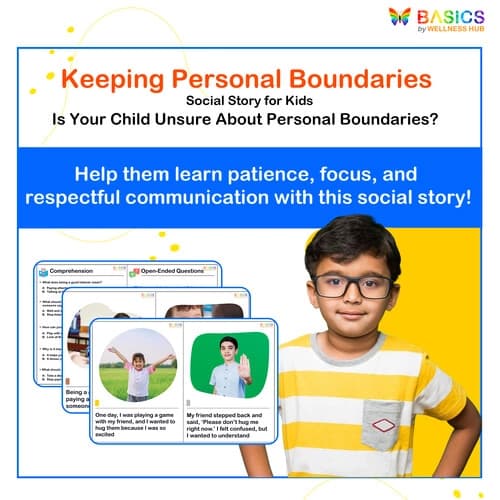
Keeping Personal Boundaries – Free Social Story for Kids’ Personal Space
FREE
₹160
50% off
5.0 (58 ratings)
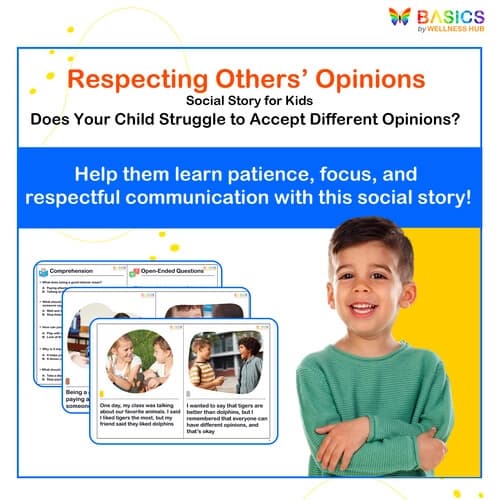
Respecting Others’ Opinions – Free Social Story for Kids
₹ 80.00
₹ 160.00
50% off
4.8 (46 ratings)
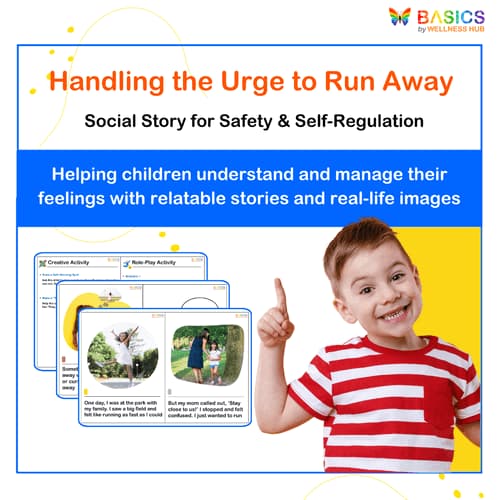
Handling the Urge to Run Away – Social Story for Safety & Self-Regulation
₹ 80.00
₹ 160.00
50% off
4.8 (44 ratings)
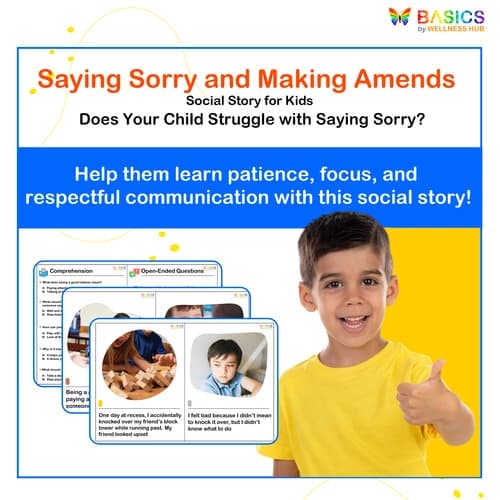
Saying Sorry and Making Amends – Social Story for Kids
₹ 80.00
₹ 160.00
50% off
5.0 (42 ratings)
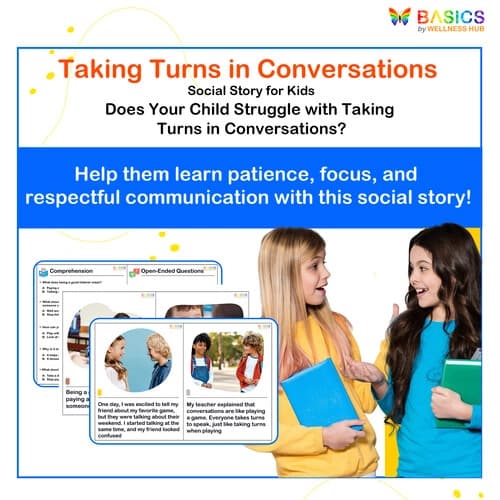
Taking Turns in Conversations – Social Story for Kids
₹ 80.00
₹ 160.00
50% off
4.9 (60 ratings)
About the Product
Introduction
Personal space is an important concept for children to learn, especially in group settings like school, playgrounds, and social gatherings. Many children, including those with autism, ADHD, or other social-emotional challenges, may struggle with understanding boundaries and maintaining appropriate distance from peers and adults. This can lead to social misunderstandings, conflicts, or discomfort for both the child and others around them.
The "Respecting Personal Space" Social Story offers a structured, relatable approach to help children recognize why personal boundaries matter, how to ask for space, and how to respect others’ space in everyday interactions. Through 16 real-life segments, children learn practical strategies for maintaining comfortable distances, understanding body language cues, and practicing polite behavior when interacting with friends, family, and teachers. This resource can be used at home, in classrooms, or during therapy sessions to foster healthy social development and empathy in children aged 4-9 years.
Product Details
- Format: Printable PDF
- Total Pages: 11
- Segments: 16 real-life social scenarios illustrating respecting personal boundaries in various contexts.
- Features:
- Engaging illustrations that enhance understanding of personal space concepts.
- Interactive activities to help children apply the lessons (e.g., role-playing exercises, reflection prompts).
- Child-friendly language that simplifies the topic of boundaries and body cues.
- Relatable examples including classroom interactions, playground settings, and everyday social situations.
This user-friendly format ensures that children, parents, and educators can easily read, discuss, and practice the steps needed to show respect for personal space and enhance social comfort in group or one-on-one environments.
Educational Benefits
1. Teaches Boundaries & Body Awareness
- Helps children understand appropriate distance when interacting with others.
- Encourages recognition of nonverbal cues such as facial expressions or body language.
2. Develops Social & Emotional Skills
- Reinforces empathy by showing how personal space violations can make others feel uncomfortable.
- Builds confidence in social interactions, reducing anxiety or misunderstandings.
3. Encourages Respect & Polite Behavior
- Demonstrates respectful ways to ask for more space if a child feels crowded.
- Shows the importance of consent and asking permission before touching or hugging.
4. Ideal for Children with Special Needs
- Structured guidance benefits kids with autism, ADHD, or social-emotional challenges.
- Clear visual supports and step-by-step narratives help simplify complex social concepts.
Instructions for Use
1. Read the Social Story Aloud
- Start by reading the story with your child, pausing to discuss the pictures and scenarios.
- Invite your child to ask questions and share experiences related to personal space.
2. Use Real-Life Examples
- Identify moments throughout the day where personal space boundaries are relevant (e.g., in line at the grocery store, during a playdate, or in a classroom circle).
- Remind the child of the lessons from the social story and encourage them to apply these strategies.
3. Practice with Interactive Activities
- Role-Play Exercises: Act out segments where a child might stand too close or bump into someone without realizing. Practice what to say and do to create comfortable space.
- Reflection & Discussion: After scenarios, ask “How do you think the other person felt?” or “What could we do differently next time?”
4. Reinforce Positive Behavior
- Offer praise and small rewards (like stickers or verbal acknowledgments) when the child successfully respects others’ space or communicates their own boundaries.
- Use consistent language from the social story (e.g., “Arm’s length distance,” “Bubble space,” etc.) to reinforce concepts.
Activities Using the Resource
The “Respecting Personal Space” social story includes engaging, hands-on activities designed to help children understand and practice healthy boundaries in everyday situations. These activities ensure that children internalize the lessons on personal space, making them more comfortable and respectful in social settings.
1. Role-Playing Personal Space Boundaries
Objective: Teach children appropriate distances and body language for comfortable interactions.
- Materials: None required, but you can use tape on the floor or hula hoops to demonstrate distance.
- How to Play:
- Discuss “personal space bubbles” and how it’s important not to pop someone else’s bubble.
- Have children act out scenarios where they stand too close or too far from someone else.
- Encourage them to adjust their distance based on visual and verbal cues (e.g., “Please stand back,” or “I feel comfortable here.”).
- Praise correct distance and kind language when children successfully maintain personal space.
2. “Space Savvy” Sorting Activity
Objective: Help children identify respectful vs. disrespectful personal space behaviors.
- Materials: Printable sorting cards with examples of personal space scenarios (e.g., “Asking permission before hugging,” “Pushing into someone’s desk,” etc.).
- How to Play:
- Give children two labeled areas: “Respectful” and “Not Respectful.”
- Have them sort scenario cards into the correct category.
- Discuss why each behavior fits under “Respectful” or “Not Respectful,” and how feelings can be affected by each behavior.
3. Personal Space “Bubble” Walk
Objective: Reinforce the concept of maintaining personal space during transitions or group movements.
- Materials: A hallway or open space, and optional arm-length markers or hula hoops.
- How to Play:
- In a line or small group, children walk while maintaining an arm’s length distance from the person in front of them.
- Emphasize no bumping or crowding. If someone accidentally invades another’s space, pause and ask the group how to readjust.
- Celebrate success when they move together without personal space intrusions.
4. “Ask First” Practice
Objective: Encourage children to ask permission before entering someone’s space or touching them.
- Materials: None required—just everyday interactions.
- How to Play:
- Encourage children to use phrases like “Can I give you a hug?” or “Is it okay if I sit close to you?”
- Praise them when they respect the answer if someone says “No” or needs more space.
- Reinforce that everyone has the right to say “Yes” or “No” to keep their personal space comfortable.
5. “Personal Space Chart”
Objective: Track positive interactions and progress in respecting personal space.
- Materials: A chart or calendar to log daily or weekly accomplishments.
- How to Play:
- Each time a child demonstrates respectful space (e.g., waiting for someone to finish talking, maintaining distance in line), mark or sticker the chart.
- After reaching a set goal (like 5 or 10 respectful interactions), give a small reward or verbal praise.
- Review progress regularly to encourage self-awareness and continuous improvement.
FAQs
Q1: Who is this social story designed for?
A1: This printable social story is ideal for children aged 4–9 who need help understanding personal space boundaries. It’s especially beneficial for children with autism, ADHD, or social-emotional challenges. Parents, educators, and therapists can use it to teach and reinforce the concept of respecting personal space in home, classroom, or therapy settings.
Q2: How do I use this social story effectively?
A2:
✔ Read the story aloud, pausing to discuss the illustrations and situations.
✔ Practice with the role-playing activities or sorting scenarios to reinforce key concepts.
✔ Ask open-ended questions about how the child feels or what they notice about other people’s reactions to personal space boundaries.
✔ Encourage real-life application by praising respectful space interactions at home, school, or during playdates.
Q3: Can this be adapted for older or younger children?
A3: Yes. While designed for ages 4–9, this social story can be modified for other age groups by:
✔ Simplifying language and focusing on fewer scenarios for younger children.
✔ Adding more complex, age-appropriate examples for older kids who need deeper explanations of personal space.
Q4: Is this suitable for children with special needs?
A4: Absolutely! The structured format and visual supports make it ideal for children with autism, ADHD, or other special needs who benefit from clear, step-by-step guidance on social norms and body awareness.
Q5: What if my child struggles with certain aspects of personal space?
A5: The story and activities are designed to break down personal space into manageable steps. Revisit key scenarios and role-play any challenging points. If needed, model the behavior yourself and offer consistent praise when your child demonstrates progress.
Q6: Do I need special materials for the activities?
A6: Most activities only require basic household or classroom items (e.g., tape for marking distance, printable sorting cards, or a simple chart). Some activities, like “Ask First” Practice, just need everyday interactions to reinforce asking permission before entering someone’s space.
Usage Rights and Restrictions
You may print and use this social story for personal, educational, or therapeutic purposes. You can reproduce it for classroom, home, or therapy use.
Not Allowed:
- Reselling, redistributing, or reuploading this resource for free or commercial use.
- Modifying or adapting it for commercial purposes.
- Sharing the PDF publicly on other platforms without permission.
For bulk licensing or commercial inquiries, please contact us directly.
Conclusion
The "Respecting Personal Space – Social Story for Kids" is a comprehensive resource to help children develop a clear understanding of personal boundaries. By using relatable scenarios, interactive activities, and child-friendly language, kids learn to recognize body cues, ask politely for space, and respect others’ comfort zones.
With consistent practice, positive reinforcement, and real-life application, children can significantly improve their social interactions and reduce conflicts arising from personal space misunderstandings. This story is a practical tool for home, classroom, or therapy, making it easy for parents, educators, and therapists to guide children towards healthy social development and empathy for others.

